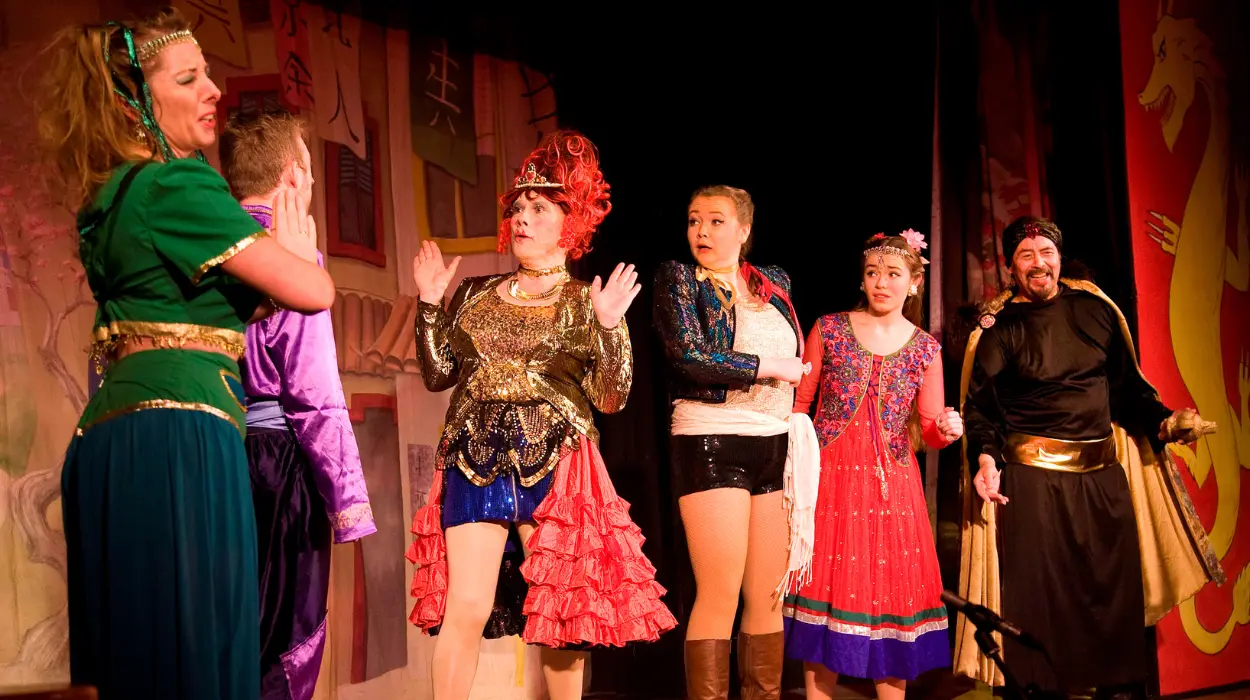It must, surely, be too early to talk about pantomime?
Oh no it isn’t.
Yes, preparations for that much-loved of English traditions – the panto – are back in full swing.
The panto season does not actually start until nearer Christmas but, as they are so popular all over the country, plans such as casting are already well underway and tickets are selling fast.
For many Christmas isn’t quite the same without his annual tradition so anyone thinking of paying a visit to the UK over the festive season might also like to squeeze in a visit to one.
The county of Kent (the “Garden of England”) is, for people travelling by car from Belgium and mainland Europe at least, usually the nearest part of the UK and one local panto that promises to be one of the most popular in the county this year is Aladdin at Broadstairs.
With a professional cast and live music this classic pantomime, will take place during December at the town’s Sarah Thorne Theatre, the theatre’s 13th annual traditional panto.
Aladdin is a Middle Eastern folk tale which has its origins in One Thousand and One Nights. Although the stories were compiled by Antoine Galland, a French translator, around 1710, the tales themselves are much older having been passed down for generations. In the UK the story of Aladdin was dramatised in 1788 by John O’Keefe for the Theatre royal, Covent Garden It has been a popular subject for panto for over 200 years.
For the uninitiated, the story is this: Aladdin lives with his widow mother, known as Widow Twankey, who takes in washing to survive. Aladdin falls in love with the Princess but he does not stand a chance unless he becomes rich. He is tricked by the wicked Abanazer to find a magic lamp with powers hidden within a secret cave but Abanazar tricks Aladdin out of it and leaves him in the cave. Aladdin is rescued by a Genie and it all works out well, a story of good triumphing over evil which is the basis of good traditional pantomime.
Casting is still taking place but for the upcoming production John Goodrum, a highly popular dame in the past, will again take the lead role.
Preparations for the new panto season is a timely reminder of the continuing huge popularity of this most festive of Christmas traditions (in the UK, at least).
So, how did pantomime come to be the form of entertainment it is today? What is it that attracts us – young and old – to this bizarre medley of fairy tale, dance, jokes and song? And how did it become part of our Christmas traditions?
Pantomime has its roots in ‘Commedia dell’Arte’, a 16th-century Italian entertainment which used dance, music, tumbling, acrobatics and featured a cast of mischievous stock characters. By the early 18th century, Commedia characters began to appear on the London stage in early pantomimes which were based on classical stories, set to music but without speech.
The theatrical device of gender switching became a mainstay of Victorian pantomime and, by the end of the 18th century, pantomime had reached epic proportions. The 1900 production of Sleeping Beauty and the Beast was one of the most lavish and successful pantomimes ever produced at London’s Drury Lane Theatre.
Professor Jane Moody, of the University of York, offers an explanation as to the ongoing popularity of the panto, saying, “Pantomime offers us the anarchic excitements of a topsy-turvy world only to give us the assurance of harmony restored.”
Every festive season, children and adults across the UK visit their local theatre to be dazzled and thrilled by the spectacle and the fun of pantomime.

You could say that pantomime has become a major visitor attraction in its own right.
Those lucky enough to catch this year’s panto in Broadstairs can expect the usual bucket-load of family fun.
A spokesman added,
“Ours is a professional pantomime with live music and it is family friendly. It is worth stating also that we stage a traditional pantomime and not one of the modern musical styles, all politically correct, versions.”
The theatre, open all year, is step free and accessible for wheelchair users. Assistance dogs are welcome and there is some accessible car parking nearby. Nearby roads have no permit restrictions.



